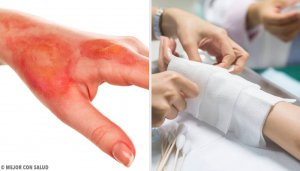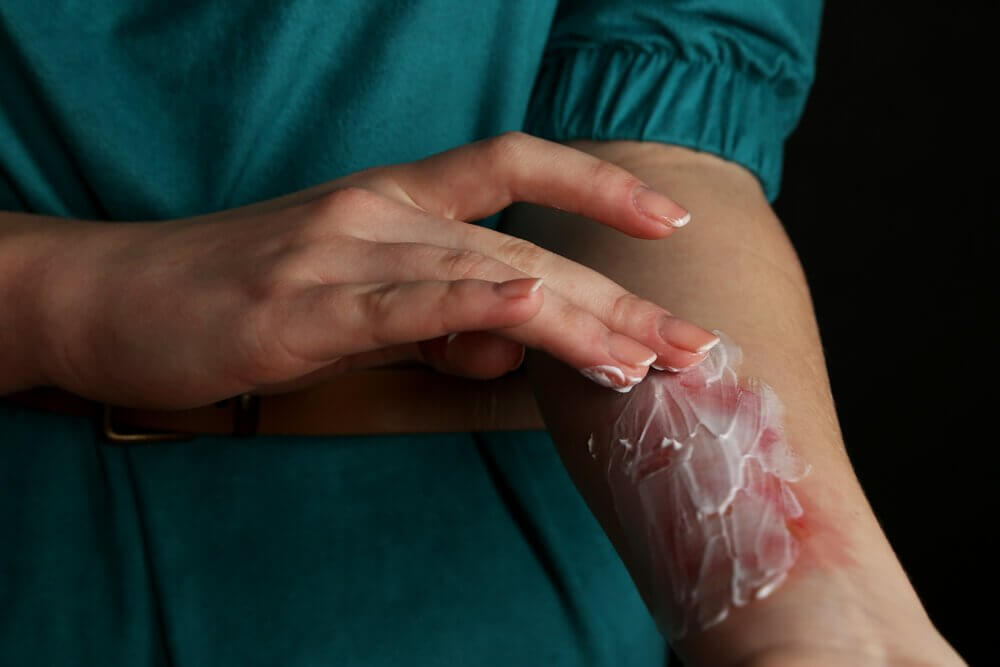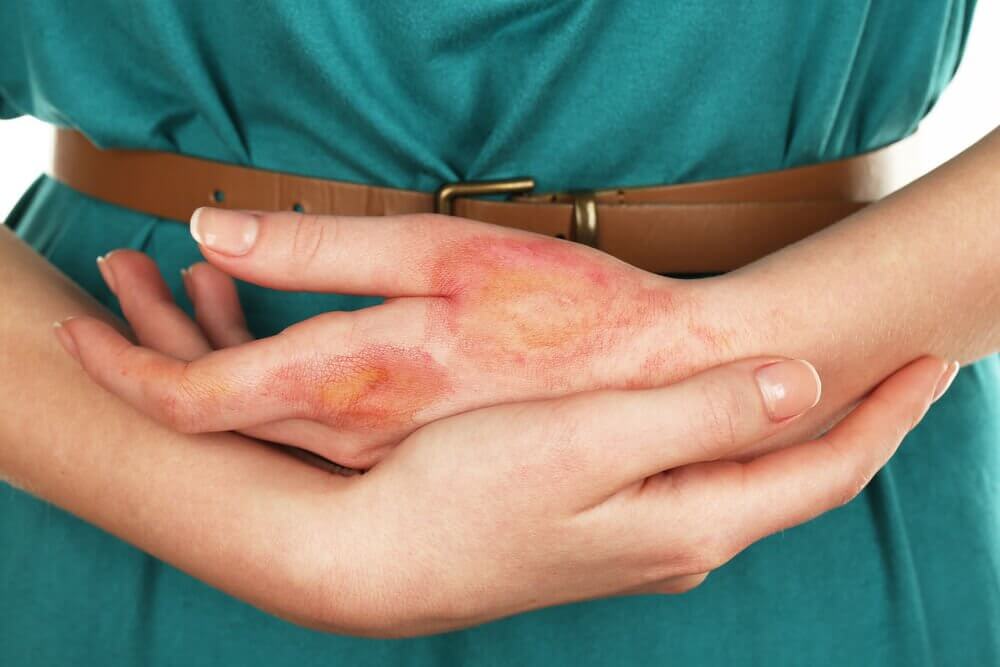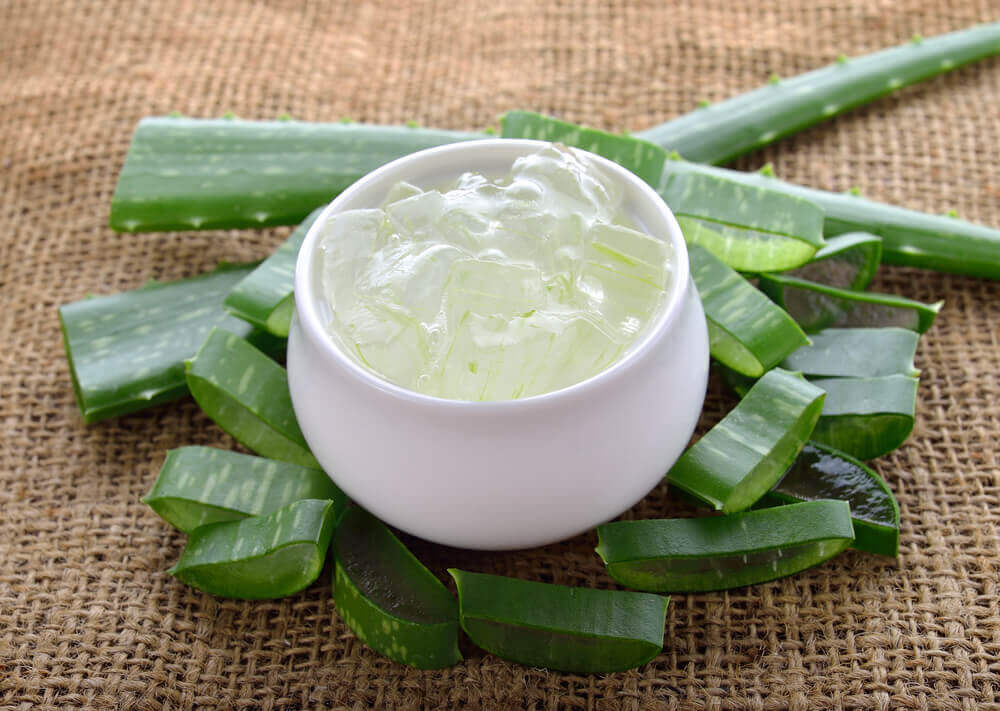What to Do after a Burn


Written and verified by the doctor Maricela Jiménez López
Do you know what to do after a burn?
It’s very common to suffer from a burn at home. Burns can vary from mild to severe, and can even be fatal. That’s why it’s important to have some basic knowledge about how to treat different types of burns and what to do if this type of injury happens to you.
There are three types of burn according to severity.
- First degree: these are superficial and affect the outer layer of skin, causing a lot of pain.
- Second degree: these are deeper, affecting the first and second layers of skin. The damaged area will appear bright red and blisters might form.
- Third degree: this is the most serious type of burn, affecting all layers of the skin and resulting in permanent tissue damage.
See also: First aid for hot water burns
Treatment for a mild or first degree burn
- Wash the area immediately with cold water for five to 10 minutes.
- Don’t break any blisters that may form. Disinfect the area and apply a burn ointment.
- Place clean and dry gauze over the burn, gently.
Treatment for a second degree burn
- Rinse the skin with cold water for 10 to 30 minutes. This prevents the burn from getting worse and affecting other layers of skin.
- With a piece of gauze or cotton bandage, wrap the fabric loosely around the skin. This keeps the air out of the burned area and helps reduce inflammation and pain.
- Don’t use ice or ice water, a cold bath, or a shower to relieve pain.
- If the wound is painful, take painkillers like ibuprofen to mitigate the pain.
- Don’t touch the burn or try to pop any blisters, as infection could occur.
Treatment for a third degree burn
This kind of burn can affect any part of the body.
In the event of a third degree burn, you must seek medical attention immediately, and the medical staff will do the following:
- Remove any burned clothing from the person’s body.
- Verify their vital signs, such as breathing, circulation, or pulse.
- Wrap the area affected with a damp cloth or towel, ensuring it is sterile.
Recommendations for treating other types of burns
If a person has clothing that catches on fire

Seek medical help immediately.
Electrical burns
Be sure to wash the burn with plenty of lukewarm – not cold – water for five minutes. Don’t remove any clothing first, do this while you wash the burn. Place a strip of gauze or a sterile bandage over the area and seek medical help immediately.
Chemical burns
If it affected the mouth or the eyes, wash thoroughly with water and seek immediate medical attention.
We recommend you read: 7 remedies for sunburns
Things not to do in the event of a burn

- Never place ice directly on the skin, as it can cause frostbite and increase the damage already present.
- Avoid applying ointments or oils that interfere with the natural healing process.
- Don’t break any blisters on burned skin, as this could lead to infection.
- Don’t cover the burn with cotton or adhesive tape. It will keep the wound from breathing and it could become infected.
- Avoid removing any burned clothing that has stuck to the skin. It’s essential to see a doctor to clean the area.
- Don’t touch any serious burns. It’s best to see a doctor as soon as possible.
- Never apply the following to a burn: toothpaste, butter, talcum powder, or lotion. They will only make the wound worse.
Some reminders for treating burns that don’t require medical attention
Aloe

You can apply the gel directly from the leaf of the plant to help relieve pain and heal the wound.
Raw honey
Honey has antibacterial, antibiotic, and anti-inflammatory properties that help promote the treatment and healing of burns. A little honey can be applied directly to the wound.
Calendula
Calendula oil has antiseptic and pain relieving properties to reduce inflammation and help heal wounds and burns. Calendula extract is available as a cream, gel, lotion, or oil, and you can choose which one you use.
All cited sources were thoroughly reviewed by our team to ensure their quality, reliability, currency, and validity. The bibliography of this article was considered reliable and of academic or scientific accuracy.
- Al-Waili, N. S., Salom, K., & Al-Ghamdi, A. A. (2011). Honey for wound healing, ulcers, and burns; data supporting its use in clinical practice. TheScientificWorldJournal. https://doi.org/10.1100/tsw.2011.78
- Burkey, B., & Besner, G. E. (2016). Burns. In Fundamentals of Pediatric Surgery, Second Edition. https://doi.org/10.1007/978-3-319-27443-0_20
- Johnson, C. (2018). Management of burns. Surgery (United Kingdom). https://doi.org/10.1016/j.mpsur.2018.05.004
- Jull, A. B., Cullum, N., Dumville, J. C., Westby, M. J., Deshpande, S., & Walker, N. (2015). Honey as a topical treatment for wounds. Cochrane Database of Systematic Reviews. https://doi.org/10.1002/14651858.CD005083.pub4
- K. Chandran, P., & Kuttan, R. (2008). Effect of Calendula officinalis Flower Extract on Acute Phase Proteins, Antioxidant Defense Mechanism and Granuloma Formation During Thermal Burns. Journal of Clinical Biochemistry and Nutrition. https://doi.org/10.3164/jcbn.2008043
- Maenthaisong, R., Chaiyakunapruk, N., Niruntraporn, S., & Kongkaew, C. (2007). The efficacy of aloe vera used for burn wound healing: A systematic review. Burns. https://doi.org/10.1016/j.burns.2006.10.384
This text is provided for informational purposes only and does not replace consultation with a professional. If in doubt, consult your specialist.








